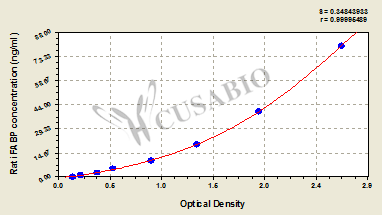CUSABIO's IFABP rat ELISA kit is an in vitro enzyme-linked immunosorbent assay for the quantitative measurement of rat IFABP in serum, plasma, urine, or tissue homogenates. This assay uses an antibody specific for rat IFABP coated on a 96-well plate. IFABP present in a sample is bound to the wells by the immobilized antibody after adding the sample into the wells. Biotinylated IFABP antibody is added to the wells, forming an antibody-analyte-antibody complex. HRP-conjugated avidin is pipetted to the wells and binds to the complex. A TMB substrate solution is added to the wells and color develops in proportion to the amount of IFABP bound. The addition of Stop Solution changes the color from blue to yellow, and the intensity of the color is measured at 450 nm using a microplate reader.
FABP2 is the encoding gene for IFABP, which is mainly expressed in intestinal epithelial cells. IFABP is released into the circulation after small intestinal mucosal damage and its plasma levels have been linked to small intestinal diseases such as necrotizing enterocolitis and celiac disease.IFABP plays important roles in several steps of fat absorption and transport, including the uptake and trafficking of saturated and unsaturated long-chain fatty acids, targeting free fatty acids toward different metabolic pathways, protecting the cytosol from the cytotoxic effects of free fatty acids, and regulating the enzyme activity involved in lipid metabolism.






